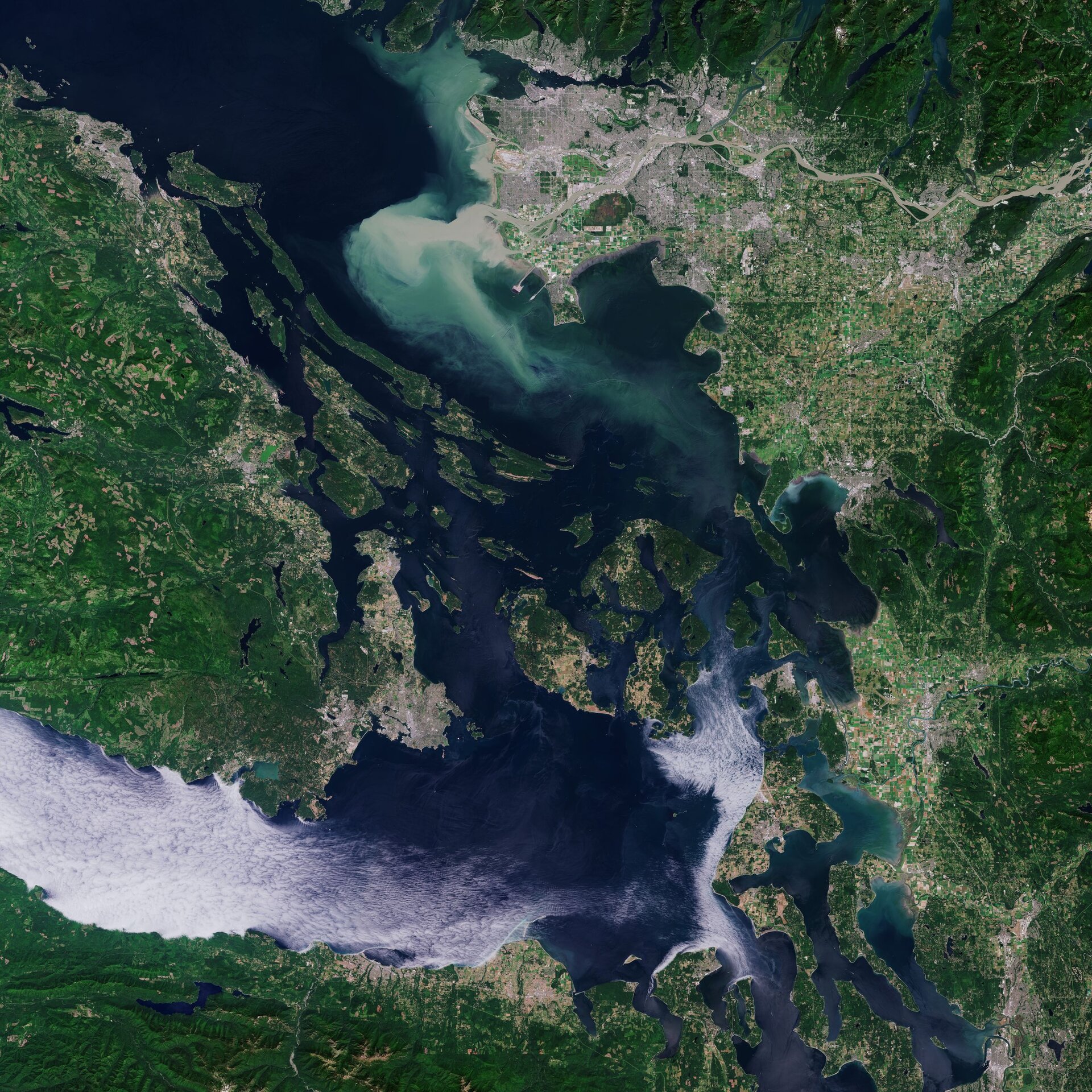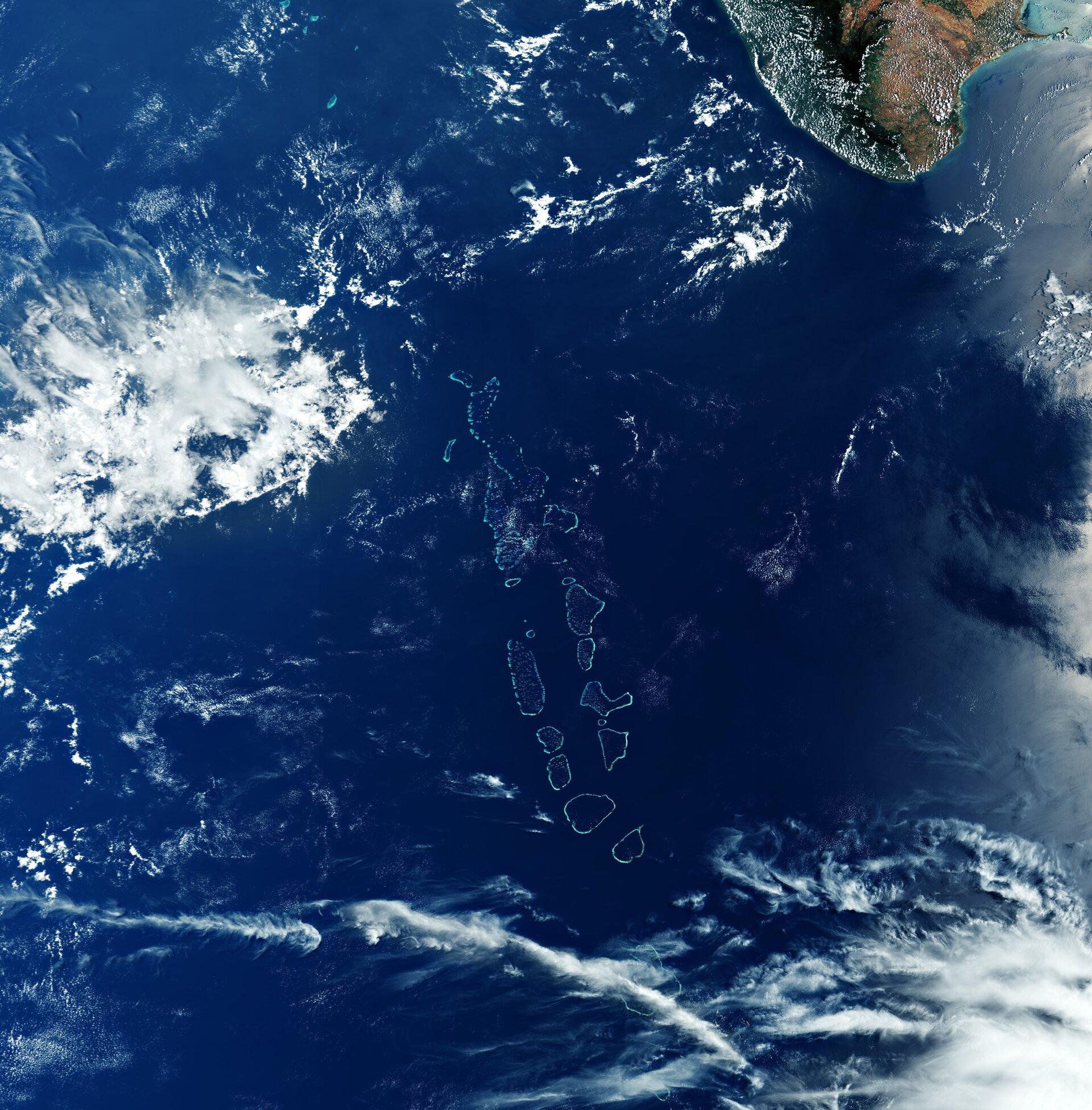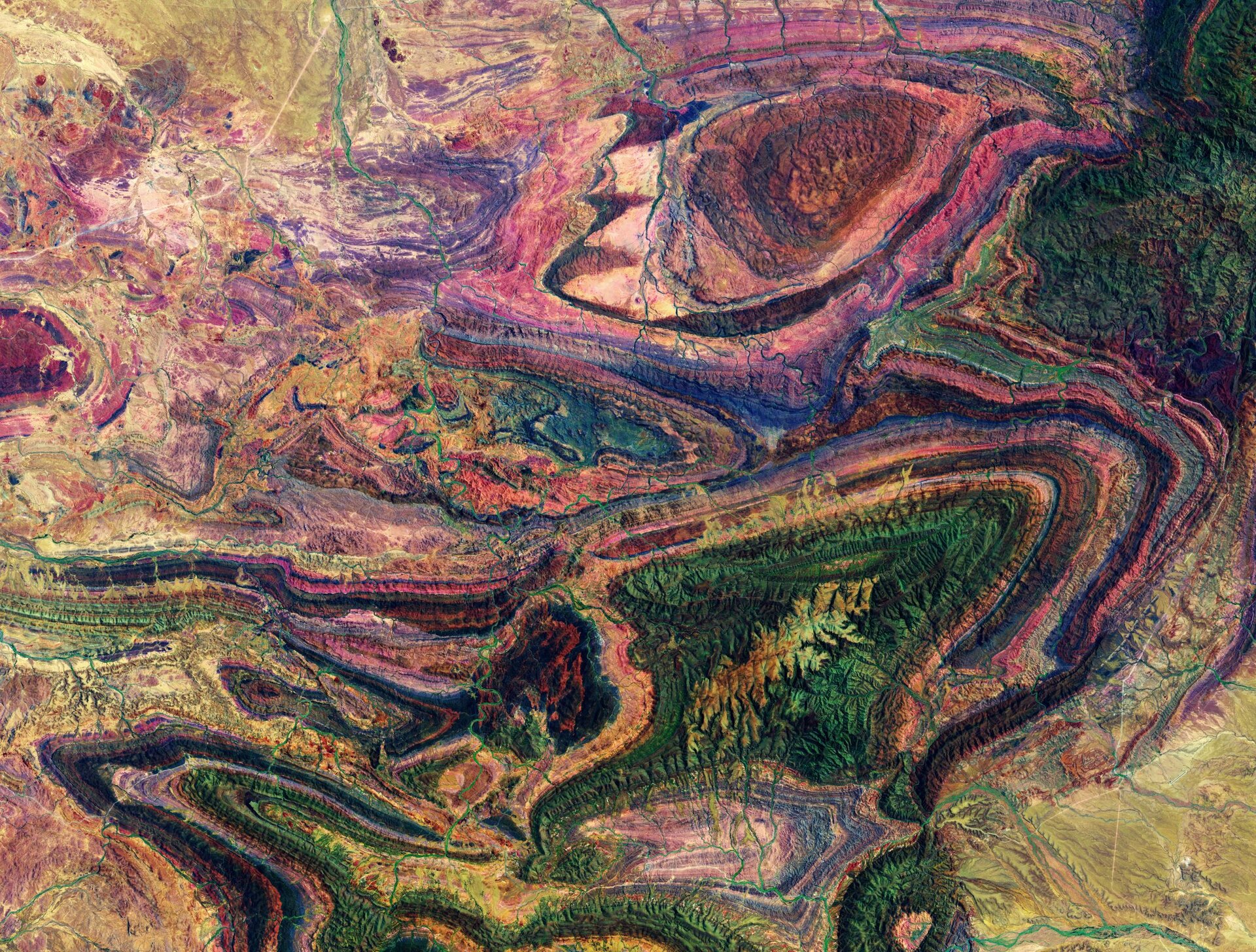Celebrate Earth Day with ESA
At ESA, every day is Earth Day. As we humans continue to subject our home planet to increasing pressures, we are better placed than ever to understand and monitor the consequences of what we inflict. Astronauts onboard the International Space Station give us the human perspective of how beautiful Earth is, while satellites orbiting above return systematic measures to take the pulse of our planet 24 hours a day.
These measurements allow us to understand how Earth works as a system and how human activity is changing natural processes, leading to climate change. This information is fundamental to global climate policy-making through international bodies such as the Intergovernmental Panel on Climate Change and UN Climate Change Conferences, the next being COP26 later this year.
Celebrate Earth Day with ESA with this compilation of content and activities now available.
First held on 22 April, 1970, Earth Day is an annual celebration honouring our beloved Earth and raising awareness of the importance of protecting our planet for future generations. This year’s theme is ‘Restoring our Earth’, which focuses on the natural processes, emerging green technologies and innovative ways that can restore the world’s ecosystems.
ESA is a world-leader in Earth observation and remains dedicated to developing cutting-edge spaceborne technology to further understand the planet, improve daily lives, support effect policy-making for a more sustainable future, and benefit businesses and the economy.
While our Earth Explorers gather data to understand how our planet works and the impact that human activity and climate change are having on the planet. The European Union’s Copernicus Sentinels, developed and built by ESA, provide systematic data for environmental services that help adapt to and mitigate change and improve every day life.
Through ESA’s Climate Change Initiative, long-term data records provide a crucial line of evidence and deliver the hard facts, enabling scientists and decision-makers to curb emissions and develop resilience to the adverse effects of climate change.
Celebrate Earth Day with us
There are many ways you can actively participate in Earth Day 2021. Below is a compilation of available resources across the agency.
A message from ESA astronaut Matthias Maurer
#Earth is our spaceship and we MUST protect it
— ESA EarthObservation (@ESA_EO) April 22, 2021
On #EarthDay2021, join us in spreading this message of love, care and the importance of satellite data on #climatechange - because every day should be #EarthDay!
A special thanks to @astro_matthias for lending us his voice! pic.twitter.com/KHdoejXXx8
Get to know your planet with ESA

Join our second instalment of ‘Get to know your planet with ESA’ Instagram live series. To celebrate Earth Day, we will be joined by Simonetta Cheli – Head of Strategy, Programme & Coordination Office at the ESA Directorate of Earth Observation Programmes.
Simonetta Cheli will walk us through what Earth observation can do for our planet and how Earth observing satellites can take the pulse of our planet: from glaciers, to forests to air quality.
You can join the live on @esa_earth on 22 April at 18:00 CEST.
A vision for our planet with Vangelis
In honour of Earth Day, Space Rocks is proud to present a career-spanning talk with Vangelis on his visionary music and a vision for our planet. Considered to be one of the most important figures in the history of electronic music, Vangelis is best known for his film scores including Chariots of Fire and Blade Runner among many others and has long been inspired by and associated with space exploration.
Join us on 22 April at 21:00 CEST (20:00 BST) on the Space Rocks YouTube channel where we’ll be discussing how space inspires his music, its connection as an integral part of culture, as well as humanity’s responsibility to Earth, and how artists and scientists can foster a responsible attitude towards our planet.
Watch Mission Alpha launch live
After Earth Day, Thomas Pesquet will return to the International Space Station. His second mission, called Alpha, will see the first European to launch on a US spacecraft in over a decade. Thomas will fly alongside NASA astronauts Megan McArthur and Shane Kimbrough, and Japanese astronaut Akihiko Hoshide.
Follow our live coverage jointly produced with France’s space agency, CNES, as we bring you updates from the launch site and speak with European experts on Thomas’ mission, his preparation, and the future of human spaceflight.
Tune in to ESA Web TV on 23 April from 10:32 CEST (09:32 BST).
Choose your Earth-themed teleworking background
Working from home can sometimes be difficult, and finding the right place to hold your virtual meetings can be challenging. Now you can add a bit of space to your home and remind your work colleagues it’s Earth Day by customising your video conference background with more than 700 images to choose from: Earth observation image of the week
Browse our new Earth Day posters
Some of our captivating images of our home planet taken by Copernicus Sentinels are now available as posters in the Real Space Images shop! From agricultural patchwork art in Serbia, to the rust-red desert in Namibia to the Lena River Delta in the Arctic, browse our new, Earth-inspired wall art for your home or office.
Don’t miss out on the shop-wide 20% discount, visit the Real Space Images shop.
Listen to our #EarthBeMine playlist on Spotify
Images from space remind us of Earth’s beauty, but also of how fragile it is. Here's a playlist to help reflect on our beautiful home planet – listen and love our planet! Access the playlist here.
Put climate in your hands
Witness the changing planet through the eye of Earth-orbiting satellites with ‘Climate from Space,’ an interactive website developed by ESA. Using interactive 3D globes, maps and hands-on storytelling, you can now explore ESA’s global satellite observations collected over five decades to see key aspects of our climate and how it is evolving.
Binge watch with us on ESA WebTV
Join us on an Earth Day marathon on ESA Web TV. Learn more about how satellites flying above our heads can help us further understand our planet and monitor the effects of climate change.
Tune in to ESA WebTV on 22 April from 09:30 to 10:30 CEST or 16:30 to 17:30 CEST for our dedicated Earth-time.
Check out our ‘Space for Climate’ websites
Learn more about ESA’s role in understanding climate change on its dedicated webpages: Space for our climate and ESA’s Climate Change Initiative.


Access the video
Fun and education for kids with Expedition: Home
Are you ready to have fun with space at home? Explore Expedition: Home, a one-stop website for kids and parents to do fun space-based activities and keep learning while at home. The minisite features plenty of activities for three age ranges: 3-6, 6-12 and 12-18 years old.
Learn more about climate in schools
A series of inspirational classroom resources to engage students to learn about Earth’s changing climate and how to monitor our planet from space is now available. Developed under the ESA Climate Change Initiative (CCI), these resources help teachers to cover the major aspects of the climate system and support Science, Technology, Engineering and Mathematics topics across eleven educational systems from ESA member States.
For more information, visit Climate for Schools.
Teach with Earth
Launching this Earth Day 2021, the Teach with Earth educational website will provide a variety of inspirational resources for educators to Teach with Earth and engage students in STEM subjects using our fascinating planet as the learning context.
On Teach with Earth, teachers will find a rich collection of ESA curricular classroom resources to engage primary and secondary students in STEM subjects which also help them learn about our planet, its complexities and the consequences of a rapidly changing world.
For more information, visit Teach with Earth.
Meet the climate experts
Learn the difference between weather and climate in this episode of ‘Meet the experts’ where Andrew Shepherd, a leading scientist from the University of Leeds, explains the role of space in studying changes to our planet in real-time and in the future.


Access the video
Find out how space science is combating climate change
Dissecting the anatomy of a thunderstorm is extremely interesting for those studying fundamental physics, but did you know it can also provide valuable insights to scientists studying climate change?
The ASIM experiment is a collection of optical cameras, photometers and an X- and a gamma-ray detector that was installed on the International Space Station in 2018. It is designed to look for electrical discharges originating in stormy weather conditions that extend above thunderstorms into the upper atmosphere.

Electrical discharges in a thundercloud have a chemical effect on the gases in the air, and cause higher concentrations of ozone and nitrous oxide - greenhouse gases that at are at the root of climate change. What’s worse, the negative effects of these gases are even more pronounced at the higher altitudes of a thunderstorm.
Knowing these effects and monitoring their progression through the ASIM experiment will be a huge asset in our fight against climate change.
Read the full story: How space science is combating climate change
Explore a new layer of Earth
One of the most comprehensive pictures of our changing planet is now available. Over 20 million satellite photos from the past 37 years have been embedded into a new layer of Google Earth – creating a new, explorable view of time on our planet.
With a new feature called Timelapse, users can witness nearly four decades of change across the entire planet. The update will show the visual evidence of the drastic changes taking place in our world including the effects of climate change and human behaviour. Users can now take a journey across the world, exploring the ever-changing shapes of coastlines, follow the growth of megacities, track deforestation and much more.
To explore our world, visit Timelapse.
An Earth Day message: “It can be done”
In summer 2018, ESA was joined by musician Vangelis and the family of scientist Prof. Stephen Hawking to beam a message marking his passing to the nearest black hole. On 22 April 2020, ESA transmitted this poignant message to all of planet Earth - as a message of hope, to say that, by working together, we can overcome this crisis and others facing humankind.


Access the video














 Germany
Germany
 Austria
Austria
 Belgium
Belgium
 Denmark
Denmark
 Spain
Spain
 Estonia
Estonia
 Finland
Finland
 France
France
 Greece
Greece
 Hungary
Hungary
 Ireland
Ireland
 Italy
Italy
 Luxembourg
Luxembourg
 Norway
Norway
 The Netherlands
The Netherlands
 Poland
Poland
 Portugal
Portugal
 Czechia
Czechia
 Romania
Romania
 United Kingdom
United Kingdom
 Slovenia
Slovenia
 Sweden
Sweden
 Switzerland
Switzerland















































